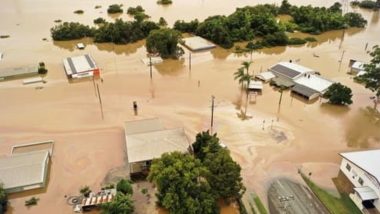Victoria, Australia’s second most populated state, has taken the worst of the damage this week with rising flood levels. Several localities, including some in the state capital Melbourne and other three Australian states, have been told to evacuate as heavy rains cause widespread flooding. In just 24 hours, parts of the country received up to four times their typical October rainfall.
Climate crisis
As the crisis unfolds, at least 500 homes have been flooded, one person has died, and another is missing. Generally, Flooding has killed more than 20 people in Australia this year, owing to a La Nina weather trend. Flooding has flooded highways, forced school closures, and knocked off power to 3,000 homes and businesses.
Many regions experienced significant 24-hour rainfall totals, some receiving almost 220mm of rain, which is more than double the town’s usual October rainfall and around one-third of London’s annual average. Several rivers in Tasmania have also flooded as a result of up to 400mm of rain falling in some locations in 24 hours. In New South Wales, approximately 600 people were ordered to evacuate the town of Forbes, where approximately 250 properties and businesses were expected to flood. More rain is expected in the coming weeks, putting additional strain on already overflowing rivers and wet terrain.
The phenomenon
According to experts, recent flooding in Australia has been exacerbated by climate change and the La Nina weather phenomenon. A La Nina enhances the possibility of rain, cyclones, and colder daytime temperatures in Australia.
The Pacific Ocean experiences La Nina weather patterns which alter ocean temperatures, resulting in severe weather. The “cold event” causes winter temperatures in the south to increase while remaining cool in the north.
Agriculture, health, water resources, and disaster management are all expected to be impacted by climate change. At the same time, climate change is worsening extreme weather and making situations difficult.

